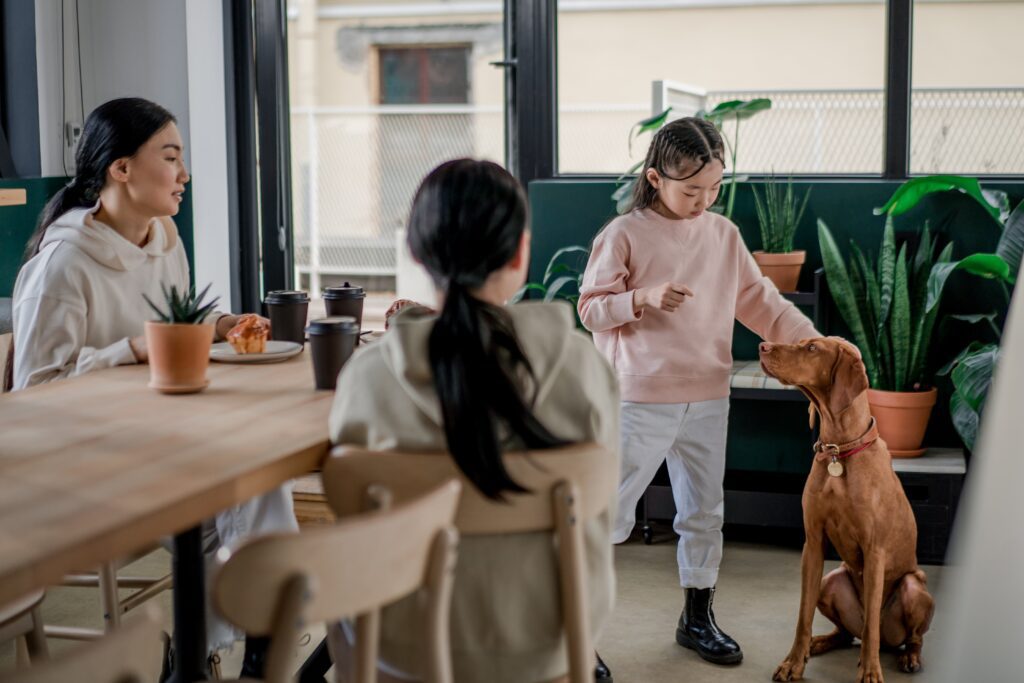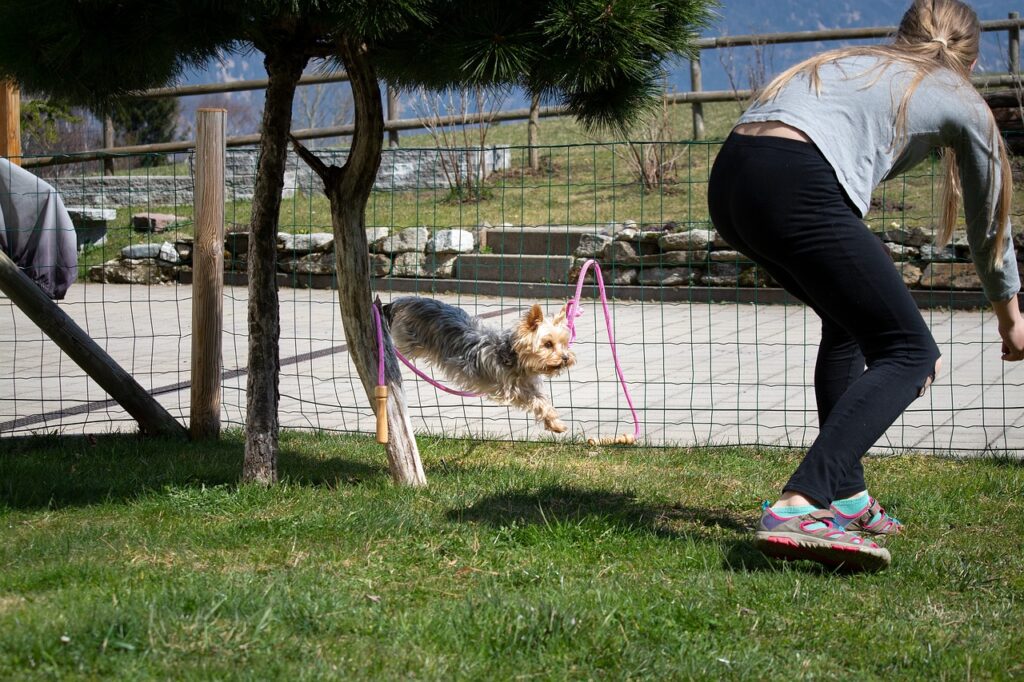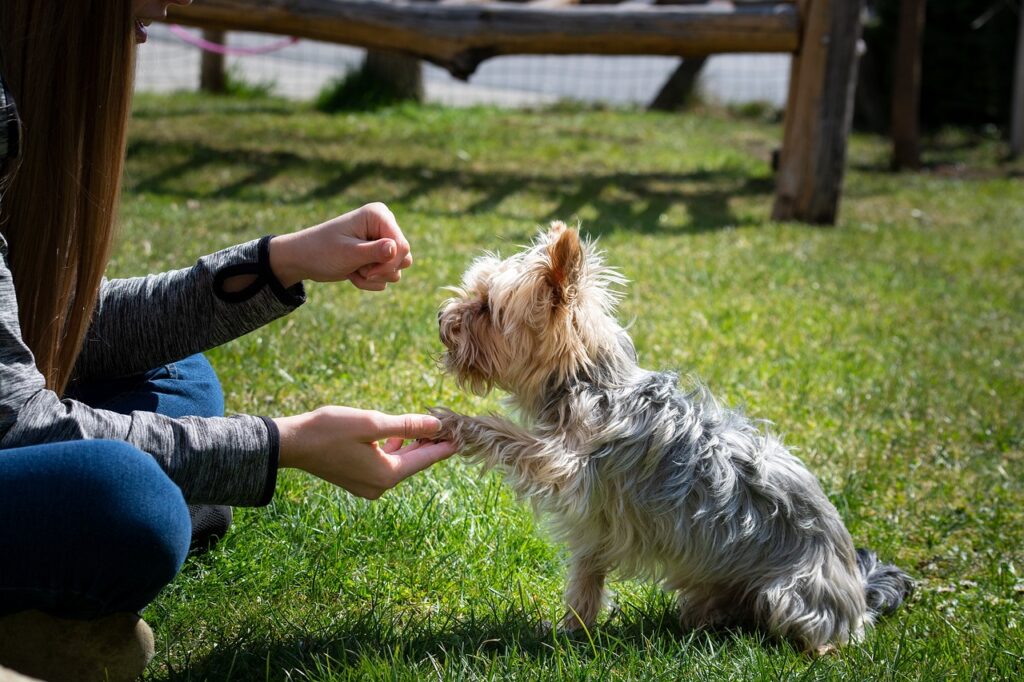Socializing your dog is an essential aspect of their overall well-being. It involves exposing your dog to various people, animals, and environments in a positive and controlled manner. By doing so, you can help your dog develop the necessary skills and confidence to navigate the world around them.
A well-socialized dog is more likely to be happy, confident, and well-behaved. They are less likely to exhibit fear or aggression towards unfamiliar situations or individuals. Socialization also helps prevent behavioral issues such as separation anxiety or excessive barking. Additionally, a well-socialized dog is easier to handle in public places and is less likely to become stressed or anxious in new environments.
Key Takeaways
- Socializing your dog is important for their mental and emotional well-being.
- Understanding your dog’s socialization needs is crucial for successful socialization.
- Positive reinforcement training techniques are effective for socializing your dog.
- Tips and tricks for socializing your dog with other dogs and people can help ensure success.
- Safety and etiquette are important when socializing your dog with children, other animals, and in public places.
Understanding Your Dog’s Socialization Needs
Socialization needs vary depending on the age and individual temperament of your dog. The critical socialization period for puppies is between 3 and 14 weeks of age. During this time, puppies are most receptive to new experiences and are more likely to form positive associations with them. It is crucial to expose puppies to a wide range of people, animals, sounds, and environments during this period.
Adult dogs also have socialization needs, although they may be different from those of puppies. Adult dogs may require exposure to new experiences or individuals that they have not encountered before. They may also need ongoing socialization to maintain their skills and confidence.
Factors such as breed, genetics, past experiences, and individual temperament can affect a dog’s socialization needs. Some dogs may naturally be more outgoing and social, while others may be more reserved or fearful. It is important to tailor the socialization process to meet the specific needs of your dog.
Positive Reinforcement Training Techniques for Socializing Your Dog
Positive reinforcement training is a highly effective method for socializing your dog. It involves rewarding desired behaviors with treats, praise, or play, while ignoring or redirecting unwanted behaviors. This approach helps your dog associate positive experiences with socialization and encourages them to repeat the desired behaviors.
When socializing your dog, start with small, controlled exposures to new people, animals, and environments. Gradually increase the level of difficulty as your dog becomes more comfortable and confident. Always reward your dog for calm and appropriate behavior during socialization sessions.
Avoid using punishment or forceful methods when training your dog. These techniques can lead to fear or aggression and may worsen any existing socialization challenges. Instead, focus on positive reinforcement and patience to help your dog develop positive associations with socialization.
Socializing Your Dog with Other Dogs: Tips and Tricks
Socializing your dog with other dogs is crucial for their overall well-being. It helps them learn appropriate canine communication skills, build confidence, and develop positive relationships with other dogs.
When introducing your dog to other dogs, start with controlled, supervised interactions in a neutral environment. Allow the dogs to sniff each other and observe their body language for signs of comfort or stress. Gradually increase the duration and intensity of the interactions as both dogs become more comfortable.
Common challenges when socializing dogs with other dogs include fear, aggression, or overexcitement. If your dog displays any of these behaviors, it is important to seek professional help from a qualified dog trainer or behaviorist. They can provide guidance on how to address these issues and ensure the safety of all dogs involved.
Socializing Your Dog with People: Strategies for Success
Socializing your dog with people is essential for their overall well-being and safety. It helps them feel comfortable around strangers, reduces the risk of fear or aggression towards unfamiliar individuals, and promotes positive interactions with humans.
When introducing your dog to new people, start with calm, controlled interactions in a familiar environment. Allow your dog to approach the person at their own pace and reward them for calm and appropriate behavior. Gradually increase the level of difficulty by introducing your dog to different types of people, such as children, men, or individuals wearing hats or glasses.
Common challenges when socializing dogs with people include fear, shyness, or overexcitement. It is important to be patient and provide positive reinforcement during these interactions. If your dog displays any concerning behaviors, seek professional help to address these issues effectively.
Socializing Your Dog with Children: Safety and Etiquette
Socializing your dog with children is crucial for their safety and the well-being of both the dog and the child. It helps your dog become comfortable around children and reduces the risk of fear or aggression towards them.
When socializing your dog with children, always prioritize safety. Teach children how to approach and interact with dogs appropriately, such as avoiding sudden movements or loud noises. Supervise all interactions between your dog and children to ensure that both parties are comfortable and safe.
It is also important to teach your dog how to behave around children. Reward calm and gentle behavior around children and provide a safe space for your dog to retreat to if they become overwhelmed. Never leave your dog unsupervised with children, especially if they have not been properly socialized.
Socializing Your Dog with Other Animals: Cats, Birds, and More
Socializing your dog with other animals is important for their overall well-being and the harmony of your household. It helps prevent fear or aggression towards other animals and promotes positive interactions between species.
When introducing your dog to other animals, start with controlled, supervised interactions in a neutral environment. Allow both animals to observe each other from a distance and gradually decrease the distance as they become more comfortable. Always reward calm and appropriate behavior during these interactions.
Common challenges when socializing dogs with other animals include prey drive or fear. Some dogs may have a strong instinct to chase or hunt smaller animals, such as cats or birds. It is important to manage these interactions carefully and seek professional help if needed.
Socializing Your Dog in Public Places: Parks, Restaurants, and More
Socializing your dog in public places is important for their overall well-being and the convenience of your daily life. It helps your dog become comfortable and well-behaved in various environments, reducing the risk of stress or anxiety in new situations.
When socializing your dog in public places, start with low-stress environments such as quiet parks or pet-friendly stores. Gradually increase the level of difficulty by exposing your dog to busier or more challenging environments. Always reward calm and appropriate behavior during these outings.
Common challenges when socializing dogs in public places include fear, overexcitement, or reactivity towards other dogs or people. It is important to be patient and provide positive reinforcement during these outings. Seek professional help if your dog displays concerning behaviors that may compromise their safety or the safety of others.
Overcoming Socialization Challenges: Fear, Aggression, and Shyness
Socialization challenges are common in dogs and can manifest as fear, aggression, or shyness towards certain situations, individuals, or animals. It is important to address these challenges with patience and seek professional help if needed.
Strategies for overcoming socialization challenges include desensitization and counter-conditioning. These techniques involve gradually exposing your dog to the feared stimulus while providing positive experiences and rewards. This helps your dog develop positive associations with the previously feared stimulus and reduces their fear or aggression.
It is important to note that addressing socialization challenges requires time, consistency, and professional guidance. Avoid forcing your dog into situations that cause fear or stress, as this can worsen their behavior and compromise their well-being.
Maintaining Your Dog’s Socialization Skills: Ongoing Training and Practice
Maintaining your dog’s socialization skills is crucial for their overall well-being and the harmony of your household. It helps prevent regression in their socialization progress and ensures that they remain confident and well-behaved in various situations.
To maintain your dog’s socialization skills, continue to expose them to new experiences, individuals, and environments on a regular basis. This can include outings to new places, playdates with other dogs, or visits from unfamiliar people. Always reward calm and appropriate behavior during these interactions.
Avoid complacency and continue to reinforce positive behaviors through ongoing training and practice. Regularly review basic obedience commands with your dog and provide opportunities for them to demonstrate their socialization skills. This helps solidify their training and ensures that they remain well-socialized throughout their lives.
In conclusion, socializing your dog is an important aspect of their overall well-being. By understanding your dog’s socialization needs and using positive reinforcement training techniques, you can help your dog become a well-socialized and happy companion. With the tips and tricks outlined in this article, you can successfully socialize your dog with other dogs, people, children, other animals, and in public places. Remember to overcome any socialization challenges with patience and seek professional help if needed. Finally, maintain your dog’s socialization skills with ongoing training and practice.



